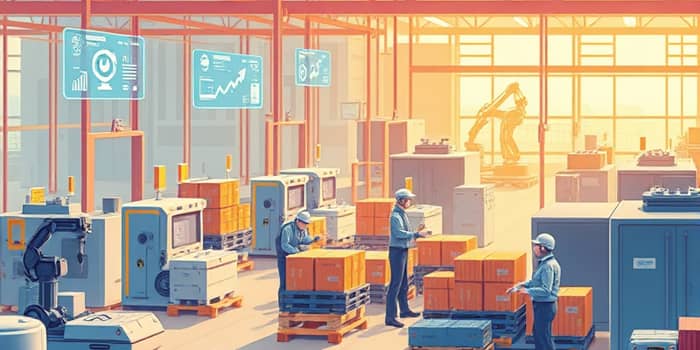
In recent months, manufacturers around the world have witnessed a welcome reprieve as supply chains begin to stabilize. After years of disruption, there is a tangible shift that is unlocking significant savings at every stage of production.
This article explores how improvements in raw materials availability, streamlined logistics, and strategic investments are driving down input costs and reshaping the manufacturing landscape.
Since the onset of the COVID-19 pandemic, manufacturers have navigated a maze of challenges: soaring transportation rates, labor shortages, shifting trade policies, and new tariffs on critical imports. In 2025 alone, the United States imposed duties of 25% on many goods from Mexico and Canada, and 10% on Chinese imports, amplifying cost pressures across multiple sectors.
Yet in the last two quarters, these pressures have begun to ease. Companies are reporting:
These developments are creating a foundation for manufacturers to optimize operational efficiencies and resilience in tandem, rather than choosing one over the other.
One of the most immediate effects of a more reliable supply chain is on labor productivity and unit costs. In the first quarter of 2025, manufacturers saw a 4.5% annualized increase in productivity while unit labor costs rose by just 1.6%. This divergence indicates that operational frictions are diminishing, enabling teams to produce more output for less additional expense.
More balanced supply flows also mean that input premiums charged during peak disruption—often necessary to secure scarce materials—are tapering off. For example, automotive producers faced tariff-related cost hikes of up to $6,250 per vehicle; as sourcing strategies such as reshoring and nearshoring mature, these surcharges are beginning to fall.
Concurrently, digital technologies are being deployed at scale. A full 78% of manufacturers have rolled out or are planning AI-enabled supply chain planning tools that offer:
To capitalize on these positive trends, many firms are doubling down on initiatives that enhance cost efficiency while safeguarding against future shocks.
Reshoring and nearshoring partnerships are top of mind. Automotive and EV battery companies, for instance, are forging deals with local chemical suppliers to secure critical inputs closer to production hubs. Such collaborations reduce cross-border transit times and limit exposure to shifting tariffs.
Alongside geography-based strategies, process innovation at the operational level is delivering rapid returns. Companies are conducting focused workflow reviews—examining warehouse layouts, picking processes, and production line sequencing—to root out waste. Instead of investing solely in high-cost, full-scale automation, they are applying incremental changes that quickly yield measurable cost reductions.
Investment in digital supply chain management is also paying off. Below is a snapshot of key numbers that highlight the scope of transformation in early 2025:
Despite the upswing, manufacturers cannot afford complacency. Tariffs remain in place for many key components, sustaining a baseline level of input cost inflation. In the UK and other markets, rising minimum wages and employer contributions—such as National Insurance—add layers of expense that must be offset by productivity gains.
Moreover, the promise of full automation still carries a high capital requirement and a long payback period for all but the largest players. This reality underscores the importance of hybrid approaches that blend human ingenuity with targeted technological upgrades.
Manufacturers poised to thrive will be those that continuously monitor their supply chain health and maintain a culture of improvement. Emphasis on cross-functional collaboration and agile planning enables rapid adaptation to emerging disruptions.
Key elements of a forward-looking strategy include:
By blending strategic foresight, digital enablement, and operational excellence, companies can transform temporary supply chain relief into long-term competitive advantage. As 2025 unfolds, the manufacturers that capitalize on this moment will be better equipped to deliver quality products to market at optimized costs, creating value for customers and shareholders alike.
References













